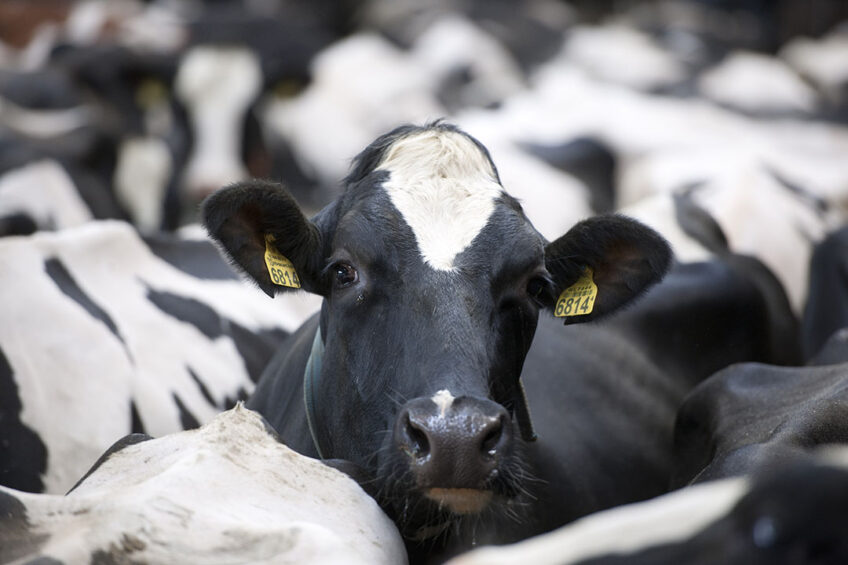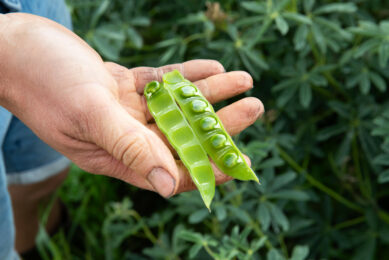Intercropping effects on cow feed, milk production and costs

What are the effects of various intercrops on feed utilisation and milk production of dairy cows? And which strategies can make the most of intercropping systems? What is the economic impact? Let’s discuss these questions…
Agronomic aspects of intercropping
Intercropping is a husbandry system by which different crops are grown at the same time on the same area of land. The system has been practiced in many parts of the world in a variety of ways depending on the producer’s need, i.e., hay, silage, graze, or green chop. As a cultural practice, intercropping promotes yield stability because all the crops in a mixed cropping system are not likely to be equally affected by weather variations. Crops with different growth habits may vary in their environmental requirements with complementary canopies and root systems. In some instances, they are able to exploit light, nutrients, and water more fully than monocultures.
Nutritional value of intercrops
By intercropping soybeans with corn, for example, the mixture will be higher in crude protein (10-11% CP for corn-soybean intercrop vs. 8% CP for corn monoculture). The intercrop will also give higher lysine and methionine values (219%) than the corn monoculture. The increased production of quality protein and essential amino acids by intercropping is of special importance in the nutrition of all classes of farm animals, including ruminants.
In terms of mineral content, the corn-soybean intercrops were found to be higher in calcium
Although ruminant animals are thought to be less sensitive to protein quality and are able to overcome a dietary deficiency of essential amino acids, such as lysine and methionine by synthesizing these acids in the rumen, evidence with high producing animals, particularly dairy cows, suggests that optimum productivity cannot be obtained with low-quality protein diets. This may be particularly true in areas known to be protein-deficient, such as many tropical and subtropical regions. The greatest potential for intercropping may be found in these areas.
In terms of mineral content, the corn-soybean intercrops were found to be higher in calcium (0.7-0.8% vs. 0.2% for corn). The phosphorus level of corn-soybean silage was slightly higher than corn silage, but the higher calcium level gives a ratio of 2:1 Ca:P which is desirable for lactating cows.
The planting of soybean with corn for silage will thus improve the protein and mineral content and will require less protein and mineral supplementation to meet the requirements of dairy cows, and will so achieve an economic advantage in the feeding program.
Feed intake
With most intercropping systems, no differences in feed intake were noted, except in the cases where the intercrops are preserved as silage. The intake may be reduced here to a varying extent depending mainly on the crop variety and the pre-ensiling treatment. In one study, silage intake (kg dry matter per day) of dairy cows was 9.2 with grass silage and was reduced to 7.1 when grass silage was replaced with pea-barley intercrop silage. The low intake in the latter case was mainly attributed to the fermentation characteristics of the pea-barley intercrop and the formation of excessive amounts of lactic acid and ammonia which adversely affect silage intake. Increasing DM content of the silage raw material by wilting or by reducing the pea-to-cereal ratio appears to be beneficial to the ensiling quality.
Digestibility of intercrops
In a study on intercropped grass-alfalfa as silage for dairy cattle, dry matter and protein digestibility of the intercropped silage were improved over the alfalfa silage. The improved digestibility, in this case, was explained on the following bases:
- There is an effective degradation arising from the optimal energy-to-protein ratio and the increased microbial profiles due to the multiple substrates.
- Tissues of the harvested material subjected to intercropping are degraded to a higher extent than those of stems of crops subjected to sole cropping when these tissues are exposed to rumen microbes.
- The lignified ring-like structure in alfalfa stem is the main factor that reduces its degradability. More tissues are possibly degraded and the complete utilisation is likely improved when alfalfa and grasses are degraded simultaneously.

Milk production from intercrops
It has been reported that feeding pea-wheat intercrop silage instead of grass silage halved the concentrate requirement for dairy cows without adversely affecting milk yield or quality (Table 1). Therefore, pea-wheat intercrops may be a viable cost-saving option for dairy farmers. The study also demonstrated the importance of using a short-straw pea variety in the intercrop, instead of a long-straw variety. The use of shorter-straw pea minimises the shading effect on the companion crop. This, in turn, allows a greater capacity of the latter to restore its nutrients through photosynthesis and hence improves its contribution to the crop mixture with a resulting improvement in milk production.
Points to consider
In many cases, components in intercrop communities may compete with each other for various environmental resources. Dominance may occur with either crop depending on the species, plant height, the interaction between resources under different cropping situations, and on the specific nutrient/ water requirements at different stages of development. Minimising competition between intercrops should be the primary objective in the management of such systems. Proper cultivar selection, appropriate spatial arrangement, and adequate water supply all help alleviate competition effects and enable the maximum benefits of intercrops as feed sources for livestock to be achieved.
References are available from the author upon request.
Join 13,000+ subscribers
Subscribe to our newsletter to stay updated about all the need-to-know content in the dairy sector, two times a week.










